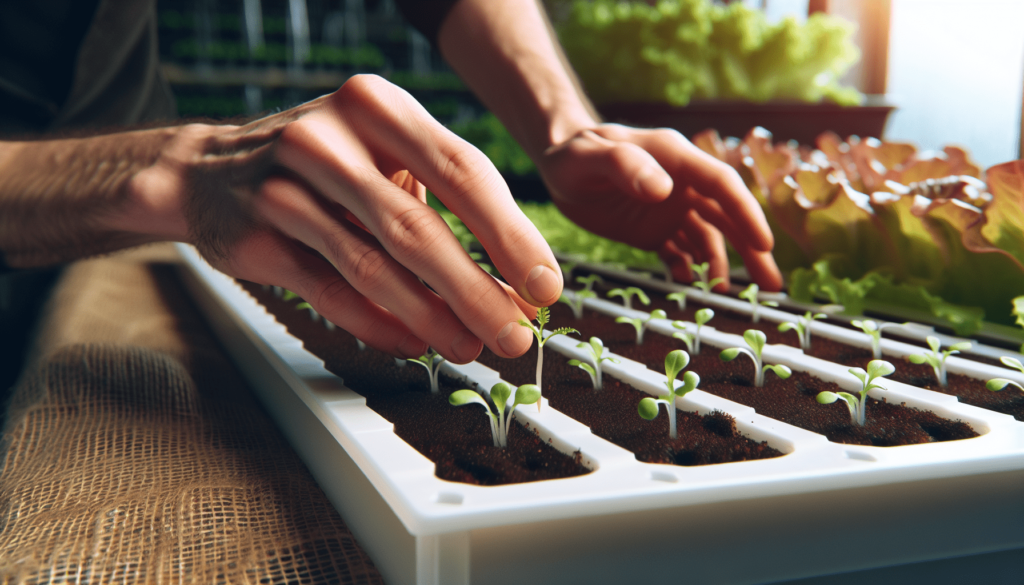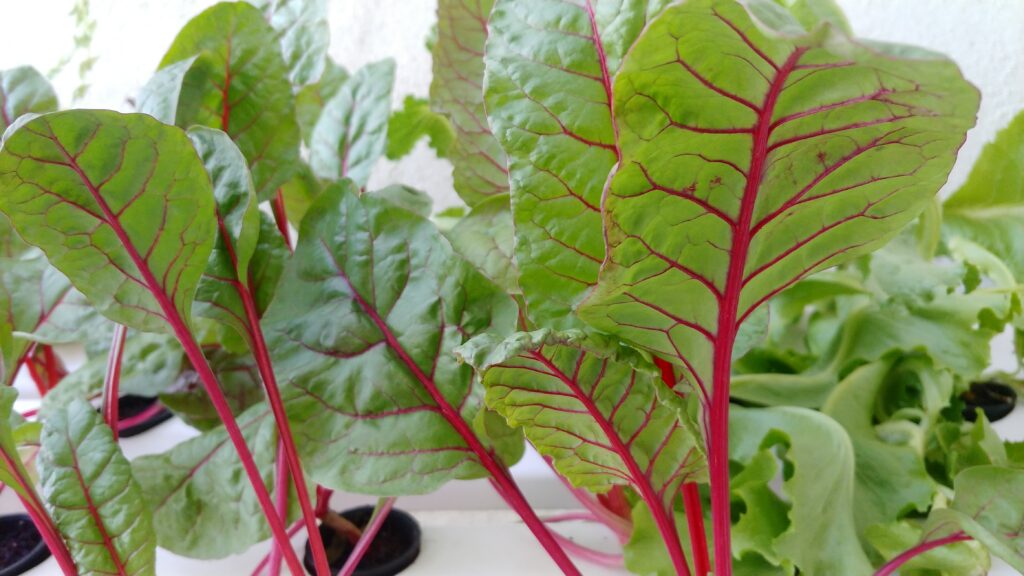If you’ve ever wondered how long it takes to set up an aquaponics system, you’ve come to the right place. Building an aquaponics system requires careful planning and a bit of patience, but the results are well worth the effort. From choosing the right location to cycling the system, this article will guide you through the process, providing all the necessary information to establish your own thriving aquaponics system. So, get ready to embark on this exciting journey towards sustainable gardening and fish cultivation!
Choosing the System
When starting an aquaponics system, the first step is to evaluate the available space. Determine whether you have enough room to accommodate the necessary infrastructure, including grow beds and fish tanks. Consider factors such as the size of your backyard, the amount of sunlight the area receives, and any restrictions such as zoning laws or homeowners association regulations.
Next, it’s important to determine the size of the system you want to establish. This will depend on your goals and the resources available to you. Are you looking to produce food for personal consumption or do you plan on selling your harvest? The size of the system will also be influenced by the available space and your budget.
Researching different aquaponics system designs is crucial to finding the one that best suits your needs. There are various designs available, including media-based systems, nutrient film technique (NFT) systems, and deep water culture (DWC) systems. Each design has its own advantages and considerations, so take the time to understand the requirements and benefits of each before making a decision.
Sourcing Materials and Equipment
Finding a reputable supplier is essential to ensure you have high-quality materials and equipment for your aquaponics system. Look for suppliers who specialize in aquaponics and have a good track record of providing reliable and durable products. Read reviews, ask for recommendations from other aquaponics enthusiasts, and don’t hesitate to ask questions to ensure you are making an informed purchase.
Once you have identified potential suppliers, it’s important to verify the product quality. Check if the materials and equipment meet industry standards and are suitable for your specific needs. Look for certifications or guarantees that demonstrate the supplier’s commitment to providing quality products.
Comparing prices and options is also crucial to find the best value for your money. While it’s important not to compromise on quality, it’s also important to consider your budget and find suppliers who offer competitive prices. Take into account factors such as shipping costs and warranties when making your decision.
Building the Infrastructure
Preparing the site is an important step in building your aquaponics system. Clear the area of any debris, level the ground, and ensure there is proper drainage. Take into consideration factors such as access to water and electricity, as well as the proximity to your living space for convenience.
Constructing the grow beds is the next step. Choose a suitable material for the grow beds, such as food-grade plastic or wood. Ensure the dimensions of the grow beds are appropriate for the size of your system and the plants you intend to grow. Consider factors such as the depth, width, and length of the grow beds to maximize productivity.
Installing the fish tank and plumbing system is the final stage of building the infrastructure. The fish tank should be large enough to accommodate your desired fish species and provide sufficient water volume for the system. Ensure that the plumbing system is properly installed to allow for water flow between the fish tank and the grow beds.
Cycling the System
Before introducing fish and plants to the system, it is important to establish the beneficial bacteria needed for cycling. These bacteria play a crucial role in converting fish waste into nutrients that can be absorbed by the plants. Add a bacterial inoculant to jumpstart the cycling process and provide a suitable environment for the bacteria to thrive.
Monitoring water parameters is essential during the cycling process. Regularly test the water for pH levels, ammonia, nitrite, and nitrate levels. Adjust the water parameters as needed to create an optimal environment for both fish and plants.
Testing the cycling process involves observing and assessing the changes in water quality and the growth of beneficial bacteria. This process usually takes around 4 to 6 weeks, depending on various factors such as water temperature, the efficiency of the bacterial inoculant, and the initial conditions of the system. Patience is key during this stage, as rushing the process could result in imbalances and potential issues later on.
Choosing Fish and Plants
Researching suitable fish species is important to ensure the success of your aquaponics system. Consider factors such as temperature tolerance, compatibility with the chosen plant species, and the local availability of fish. Common fish species used in aquaponics include tilapia, trout, catfish, and koi. Choose fish species that are suitable for your climate and are legal to keep in your area.
Selecting appropriate plant varieties is also crucial for a productive aquaponics system. Consider factors such as the growth rate, nutritional needs, and compatibility with the chosen fish species. Some popular plant choices for aquaponics include lettuce, herbs, tomatoes, and leafy greens. Choose plants that you enjoy eating and that are well-suited to your local climate.
Understanding symbiotic relationships between fish and plants is important for the overall health and productivity of your system. In an aquaponics system, the fish provide essential nutrients for the plants through their waste, while the plants help to filter and clean the water for the fish. This symbiotic relationship creates a sustainable and self-regulating ecosystem.
Introducing Fish and Plants
Acclimating the fish to the system is an important step to ensure their well-being. Gradually introduce the fish to the water in the tank, allowing them time to adjust to the temperature and water conditions. Monitor their behavior and health closely during this period. Avoid introducing large numbers of fish at once to prevent overloading the system.
Planting the seedlings or seeds is the next step in establishing your aquaponics system. Place the plants in the grow beds, ensuring they have proper access to water and nutrients. Monitor their growth and make any necessary adjustments to the system to optimize their development.
Managing nutrient levels is essential to maintain a healthy balance in your system. Monitor the levels of nutrients and adjust feeding practices accordingly. This may involve adding additional fish food or making changes to the fish stocking density. Regularly check the pH levels and nutrient levels to prevent imbalances and optimize plant growth.
Monitoring and Maintenance
Maintaining proper water quality is crucial for the success of your aquaponics system. Regularly monitor water parameters such as pH, ammonia, nitrite, and nitrate levels. Take appropriate actions to adjust these parameters as needed.
Feeding the fish and plants is an ongoing task in aquaponics. Ensure your fish are receiving a balanced diet to support their health and growth. Feed the plants with appropriate nutrients and provide any necessary supplements to ensure optimal plant growth.
Controlling pests and diseases is an important aspect of aquaponics maintenance. Regularly inspect the plants for signs of pests or diseases and take appropriate measures to address any issues. Implementing preventive measures, such as introducing beneficial insects or using organic pest control methods, can help to minimize the risk of infestations.
Harvesting and Yield
Determining the optimal harvest time will depend on the specific fish and plant species in your aquaponics system. Monitor the growth and development of the fish and plants, and harvest them when they have reached their optimal size or maturity. This will ensure you get the highest quality produce and maximize your yield.
Harvesting fish and plants can be done in a variety of ways, depending on the species and your preferences. Fish can be harvested by netting them from the tank or by using a fish trap. Plants can be harvested by cutting the leaves or fruits when they are ready for consumption. Handle both fish and plants with care to minimize stress and damage.
Calculating the productivity of your aquaponics system involves assessing the yield of fish and plants over a specific period of time. Keep track of the weight or quantity of the harvest, as well as the associated costs and inputs. This will help you evaluate the performance of your system and make any necessary adjustments for future growth.
Troubleshooting Issues
Identifying common problems in an aquaponics system is essential for timely intervention and prevention of further issues. Common problems include imbalanced nutrient levels, water quality issues, and plant or fish health problems. Regular monitoring and observation will help you identify these issues early on.
Addressing water quality issues promptly is crucial for the health of your system. If you notice changes in water parameters or signs of poor water quality, take immediate action to resolve the issue. This may involve adjusting the pH, adding supplemental minerals, or increasing water circulation. Regular water testing and maintenance will help prevent water quality problems.
Troubleshooting plant or fish health issues requires careful observation and identification of the underlying causes. Common plant health issues in aquaponics include nutrient deficiencies, pests, and diseases. Fish health problems can include poor growth, abnormal behavior, or signs of illness. Consult resources such as aquaponics guides, forums, or local experts to help diagnose and address these issues.
Scaling Up or Expanding
Considering future growth is important if you plan to scale up or expand your aquaponics system. Assess your goals and determine if you have the necessary space, resources, and commitment to undertake a larger system. Think about potential challenges and opportunities that expansion may bring and plan accordingly.
Adding additional grow beds or tanks is a common way to scale up an aquaponics system. This can be done by replicating the existing infrastructure or implementing new designs. Consider factors such as space availability, water and energy requirements, and the need for additional filtration or monitoring systems.
Planning for system expansion involves careful evaluation of your resources and goals. Determine the financial investment required, the labor and maintenance needs, and the potential returns on your investment. Create a well-thought-out plan that takes into account your available resources and the scalability of your existing system.


